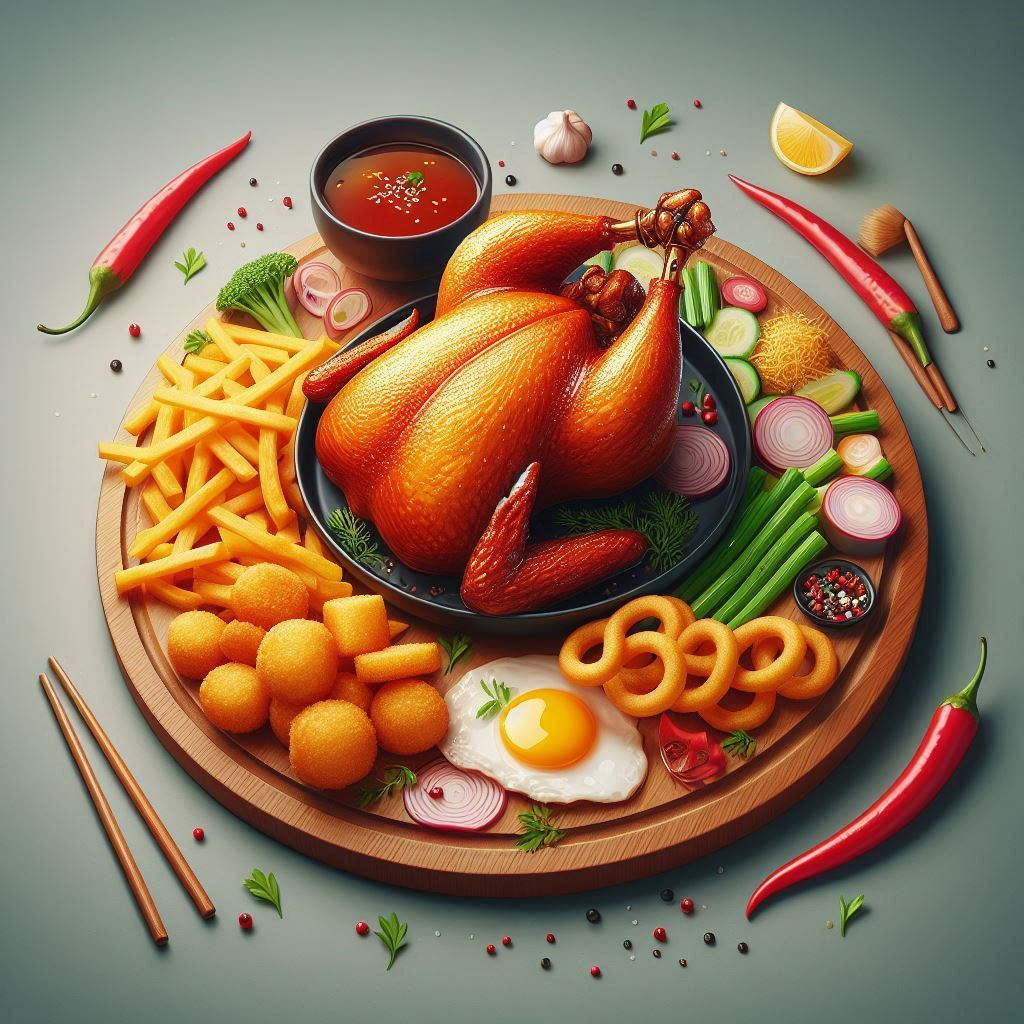
A Crispy Journey: The History and Preparation of Crispy Duck
Ah, Crispy Duck! A dish that evokes images of glistening, golden skin, succulent meat, and a symphony of flavors. But this culinary masterpiece has a rich history, a story that spans continents and centuries. Let’s embark on a journey to uncover its secrets, from its humble beginnings to its modern-day glory.
Origins: A Tale of Two Empires
The origins of Crispy Duck can be traced back to two ancient empires: China and France. In China, the dish, known as Peking Duck, has been enjoyed for over 1,000 years, its history intertwined with the rise and fall of dynasties. The earliest mention of Peking Duck appears in the Yuan Dynasty (1271-1368), where it was considered a delicacy reserved for the elite.
Meanwhile, in France, the Canard à la Presse (Duck à la Presse) emerged in the 18th century. This dish involved pressing the duck to extract its juices, which were then used to make a rich sauce. The duck itself was then roasted until crispy.
The Art of Peking Duck: A Culinary Masterpiece
Peking Duck, the Chinese version, is a true culinary marvel. Its preparation is a meticulous process, a symphony of techniques that have been perfected over centuries.
The Duck: The key to a perfect Peking Duck is the Pekin duck, a breed known for its tender meat and thick layer of fat. The ducks are carefully raised and fed a special diet to ensure optimal flavor and texture.
The Process: The preparation of Peking Duck is a multi-step process:
- Marination: The duck is marinated with a blend of spices, including star anise, cinnamon, and ginger, which infuse the meat with a complex and aromatic flavor.
- Air Drying: The marinated duck is then air-dried for 24 hours to allow the skin to dry and become crispy.
- Roasting: The duck is roasted in a specially designed oven at high temperatures, ensuring even cooking and a perfectly crispy skin.
- Carving: The roasted duck is expertly carved at the table, with the skin carefully separated from the meat.
The Accompaniments: Peking Duck is traditionally served with a variety of accompaniments, including:
- Thin pancakes: These are used to wrap the duck meat and other ingredients.
- Hoisin sauce: A sweet and savory sauce made from fermented soybeans, garlic, and spices.
- Spring onions: These add a fresh and pungent flavor to the dish.
- Cucumber: Provides a refreshing contrast to the richness of the duck.
The French Influence: Canard à la Presse
While Peking Duck holds a special place in Chinese cuisine, the French Canard à la Presse offers a different approach to crispy duck.
The Technique: The key to this dish is the pressing technique. The duck is placed in a specialized press, which extracts its juices and renders its fat. The resulting juices are used to create a rich and flavorful sauce, while the pressed duck is roasted until crispy.
The Flavors: Canard à la Presse is known for its intense flavor and rich texture. The pressing technique concentrates the duck’s natural flavors, creating a truly satisfying dish.
Crispy Duck Today: A Global Phenomenon
Crispy duck, in its various forms, has become a global phenomenon. From Michelin-starred restaurants to humble street food stalls, this dish is enjoyed by millions around the world.
Modern Variations: Chefs have experimented with different marinades, sauces, and cooking techniques, resulting in a wide range of variations on the classic crispy duck theme.
The Legacy: Whether it’s the traditional Peking Duck or the elegant Canard à la Presse, crispy duck remains a testament to the culinary ingenuity of different cultures. It’s a dish that continues to delight and inspire, a timeless classic that transcends borders and generations.
So, the next time you encounter a plate of crispy duck, take a moment to appreciate the history and artistry that went into its creation. It’s more than just a meal; it’s a story waiting to be told.



